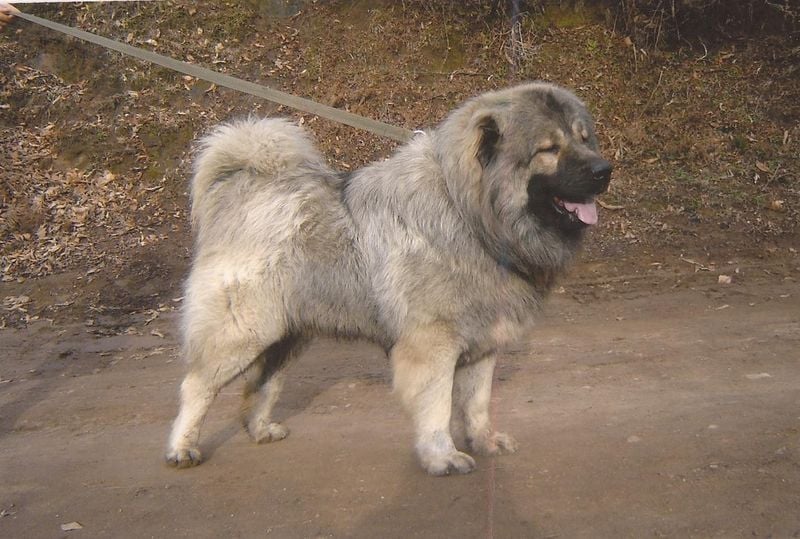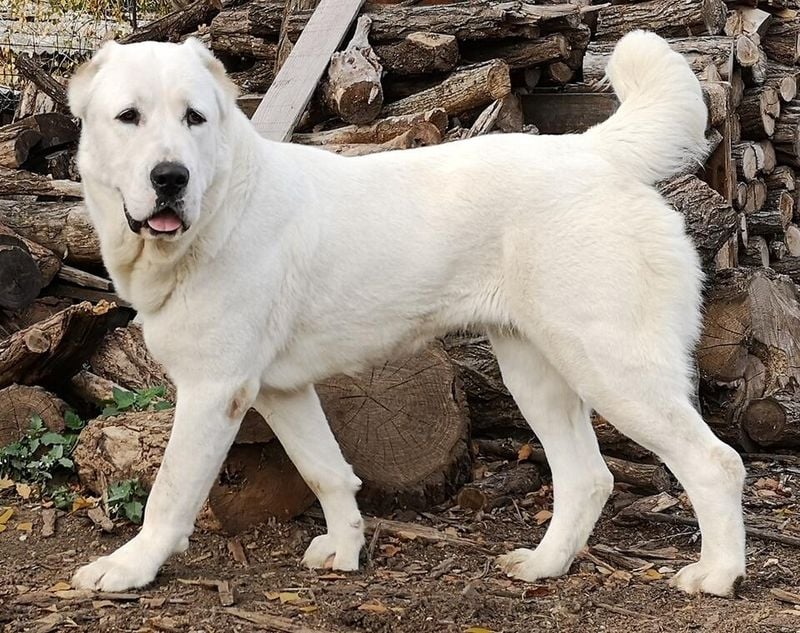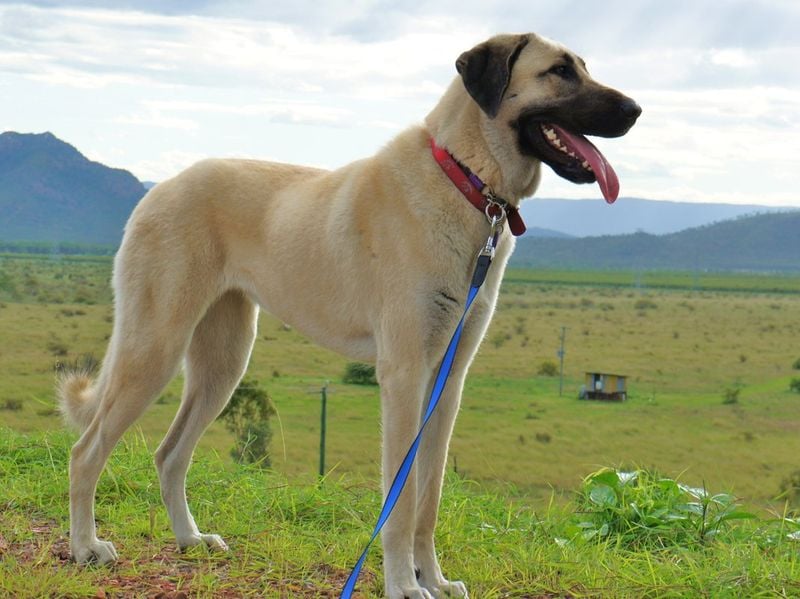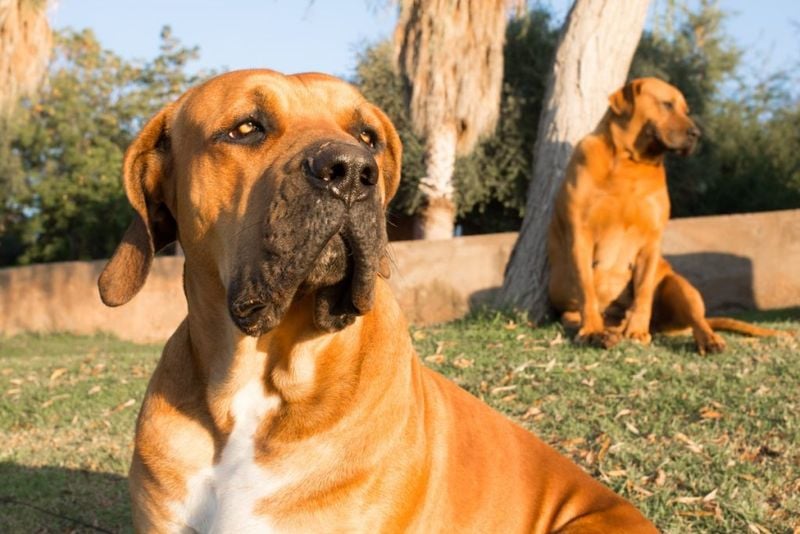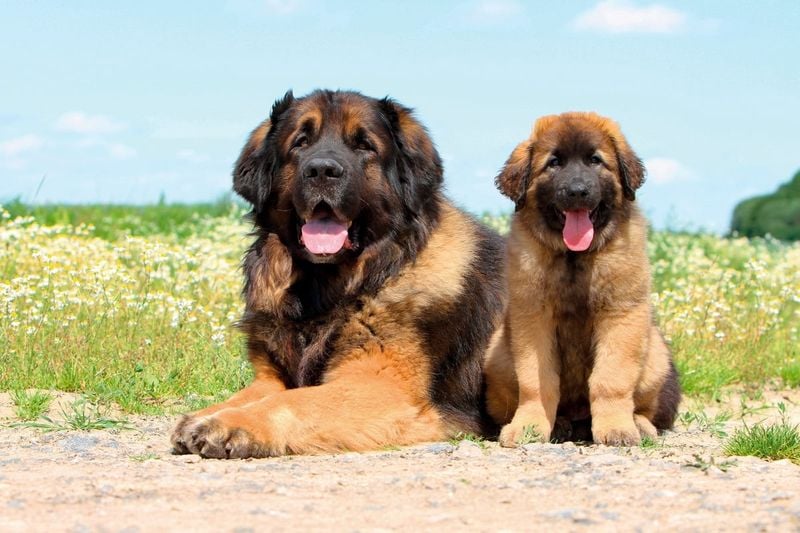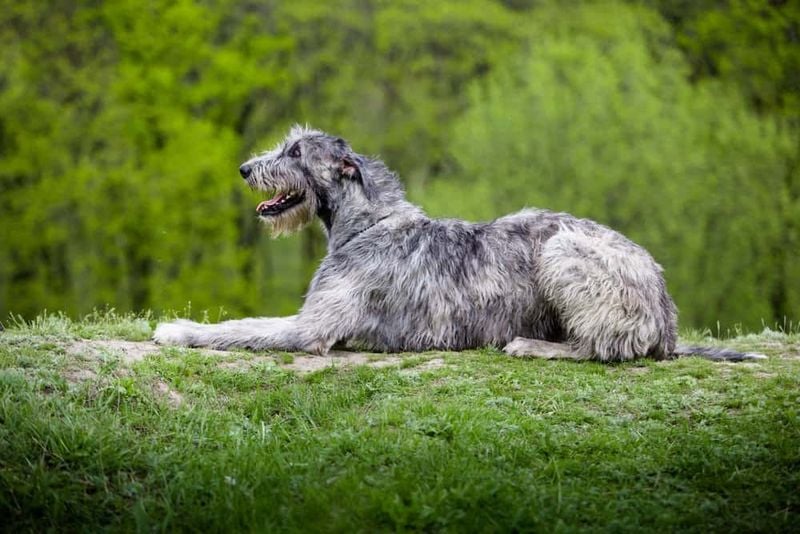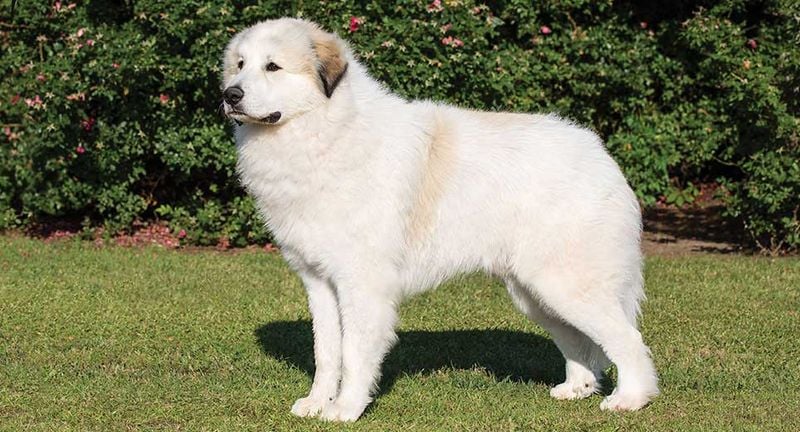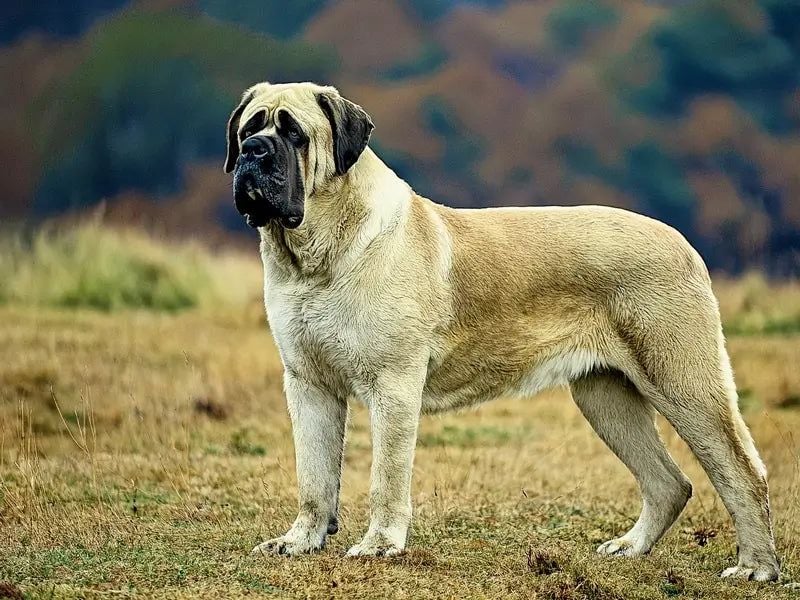You Won’t Believe These 15 Dogs Could Scare Off a Bear
Bears are powerful wilderness creatures that can strike fear into the hearts of most humans and animals alike. But did you know certain dog breeds possess the courage, strength, and protective instincts to actually stand up to these massive predators? While no dog should ever be intentionally put in harm’s way, history—and real-world encounters—have shown that some dogs are naturally equipped to defend livestock, homes, and even people against large, dangerous animals.
These aren’t your average pets. We’re talking about muscular, fearless breeds with roots in mountainous regions, where survival often meant fending off wolves, wildcats, and yes—even bears. These dogs aren’t just big; they’re bred with purpose. They combine raw power, strategic instinct, and unwavering loyalty, making them formidable protectors of flocks, families, and territory.
In rural areas and rugged landscapes around the world, these dogs are more than companions—they’re guardians. Some have bite forces that rival apex predators, while others rely on imposing size, fearless attitudes, and an unshakeable drive to protect. Whether facing off with a threat or simply acting as a strong deterrent, these breeds command respect—even from the wildest of beasts.
Ready to meet the canine elite? Here are 15 dog breeds so powerful and fearless, even a bear might think twice before crossing their path.
1. Kangal Shepherd Dog: Turkey’s Fearless Guardian
Standing tall with powerful muscles beneath their tan coats, Kangal Shepherds were bred to protect livestock from wolves and bears in the harsh Turkish countryside. Their bite force measures an astonishing 743 PSI – stronger than many wild predators!
Kangals combine vigilance with remarkable self-confidence when facing threats. Unlike aggressive breeds, they typically warn before attacking, giving bears a chance to retreat.
These dogs reach weights of 140 pounds and heights of 30+ inches, creating an imposing physical presence. Their protective instincts are legendary among shepherds who trust these dogs with their flocks in remote mountain regions where bears frequently roam.
2. Caucasian Shepherd: The Mountain Fortress
Weighing up to 220 pounds with a thick double coat resembling a lion’s mane, Caucasian Shepherds evolved in the rugged mountains between Europe and Asia. These ancient guardians protected flocks from predators including brown bears native to their homeland.
Their territorial nature makes them exceptional property defenders. A Caucasian Shepherd will fearlessly confront anything threatening their family or territory.
Despite their intimidating size, they show remarkable gentleness with family members. These dogs require experienced owners due to their independent thinking and powerful physique. Their deep, thunderous bark alone is often enough to send bears scrambling in the opposite direction.
3. Tibetan Mastiff: Ancient Guardian of the Himalayas
Originally bred to guard Tibetan monasteries and nomadic camps, these majestic dogs have protected their people from snow leopards and Himalayan bears for centuries. Their thick double coats create an illusion of even greater size, making them appear truly massive to potential threats.
Tibetan Mastiffs possess incredible cold tolerance and can survive harsh mountain conditions. Their independent nature comes from generations of making protection decisions without human guidance.
One fascinating aspect is their nocturnal tendencies – they become more alert and protective at night when bears typically prowl. Though gentle with family, their fierce loyalty translates to natural bear-deterring abilities that have been valued by mountain peoples throughout Asia.
4. Central Asian Shepherd: The Desert Sentinel
Hailing from countries along the ancient Silk Road, Alabais (as they’re commonly called) have protected caravans and livestock across Central Asia for over 5,000 years. These massive dogs – sometimes weighing over 200 pounds – were specifically bred to fend off predators including bears and wolves.
Their thick skin and loose neck fur provide critical protection during confrontations with wild animals. Many Alabai owners report their dogs showing no fear when facing creatures several times their size!
Interestingly, these dogs operate with minimal direction, making independent decisions about threats. Their imposing presence combined with surprising agility makes them formidable opponents that even bears think twice about challenging.
5. Anatolian Shepherd: Turkey’s Silent Protector
Farmers across the Turkish plains have relied on Anatolian Shepherds for thousands of years to guard flocks against bears and wolves. Unlike some guardian breeds, Anatolians work silently – stalking potential threats and positioning themselves between predators and their charges.
Their tawny coats blend perfectly with the landscape, allowing them to surprise approaching bears. These dogs possess remarkable stamina, patrolling vast territories for hours without tiring.
What truly sets Anatolians apart is their calculated response to threats. Rather than immediate aggression, they assess situations and respond proportionally – a strategic approach that proves effective against bears, who typically prefer avoiding confrontation when faced with a confident, capable defender.
6. Sarplaninac: The Balkan Battlefield Guardian
Developed in the mountains of southeastern Europe, Sarplaninacs have protected sheep from bears and wolves across the Balkans for centuries. Their dense, weather-resistant coats enable them to work in harsh conditions where bears frequently hunt.
These dogs possess remarkable territorial awareness, often patrolling boundaries without human direction. Their independence stems from traditional shepherding practices where dogs would guard flocks for days without human supervision.
Perhaps most impressive is their fearlessness – Sarplaninacs don’t hesitate to confront animals many times their size. Historical accounts tell of single dogs holding off bear attacks until shepherds could arrive with reinforcements. Their protective instinct is so ingrained that even modern pets retain strong guardian tendencies.
7. Boerboel: Africa’s Farmland Defender
Developed by South African farmers to protect homesteads from lions and other predators, Boerboels bring remarkable courage to bear confrontations. Their name literally means “farm dog” in Afrikaans, reflecting their primary purpose as property guardians.
With muscular bodies weighing up to 200 pounds, these dogs combine strength with surprising agility. Their short coats and efficient cooling systems allow them to work effectively even in warm climates where bears might be encountered.
Boerboels possess exceptional situational awareness, distinguishing between genuine threats and normal activities. Their confident, measured response to danger makes them effective deterrents – bears typically prefer easier targets than a farm protected by these powerful guardians who won’t back down even when facing creatures twice their size.
8. Russian Black Terrier: The Soviet Super-Dog
Created by the Soviet military specifically for protection and patrol work, Russian Black Terriers combine intelligence with impressive physical power. These dogs weren’t just bred for show – they were developed to work in harsh conditions alongside border guards where bears sometimes crossed.
Their thick, waterproof double coats protect them during confrontations with wildlife. Standing around 30 inches tall and weighing up to 140 pounds, they present a formidable obstacle to any bear considering mischief.
What makes these dogs particularly effective against bears is their combination of fearlessness and trainability. Unlike some guardian breeds that act independently, Black Terriers respond precisely to commands while maintaining protective instincts. Their intimidating appearance alone often prevents confrontations before they begin.
9. Akita Inu: Japan’s Fearless Mountain Dog
Revered in Japan for their courage, Akitas were historically used by royalty for hunting bears in mountainous regions. These powerful dogs possess remarkable tenacity when protecting their families, refusing to back down even against much larger animals.
Their thick double coats and sturdy builds enable them to withstand harsh conditions and physical confrontations. Japanese folklore contains numerous tales of Akitas protecting children from bears and other wildlife.
What truly distinguishes Akitas is their unwavering loyalty combined with natural protective instincts. Unlike dogs trained specifically for guard work, their bear-deterring abilities come from deeply ingrained personality traits. Modern Akita owners often report their dogs’ heightened alertness when encountering wildlife, demonstrating these ancient instincts remain strong despite generations of domestication.
10. Komondor: The Mop-Like Warrior
Don’t let their unusual appearance fool you – beneath those distinctive white cords lies a serious guardian bred to protect Hungarian flocks from wolves and bears. Their unique coat serves multiple purposes, including camouflage among sheep and protection during confrontations with predators.
Komondors possess exceptional territorial instincts, naturally patrolling their areas without constant direction. Their independent thinking stems from traditional shepherding where dogs worked without human supervision for extended periods.
The most fascinating aspect of Komondors is how their appearance actually helps in bear encounters. The hanging cords create visual confusion for predators, making it difficult to target vulnerable areas during confrontations. Bears, typically cautious by nature, often retreat rather than engage with these unusual-looking but fiercely protective dogs.
11. Leonberger: The Gentle Giant with Hidden Courage
Originally bred in Germany as noble companions, Leonbergers possess surprising courage when family members face threats. Their massive size – up to 170 pounds – combined with lion-like manes creates an imposing figure few bears would challenge.
Despite their gentle nature with family, these dogs show remarkable protective instincts when danger appears. Their powerful swimming abilities and weather-resistant coats make them effective guardians even in wilderness settings.
Leonbergers demonstrate exceptional awareness of their surroundings, often positioning themselves between potential threats and family members without aggression. Their deep, resonant bark serves as an effective warning system that can deter approaching bears. While not bred specifically as guard dogs, their natural protective tendencies make them surprisingly effective wilderness companions.
12. Irish Wolfhound: The Ancient Bear Hunter
Standing nearly three feet tall at the shoulder, Irish Wolfhounds were historically used to hunt wolves and bears across medieval Europe. Their impressive speed – they can outrun many wild animals – allows them to intercept approaching threats before they reach their families.
Despite their hunting heritage, modern Wolfhounds typically deter rather than attack. Their sheer size and confident presence often convince bears to seek easier targets elsewhere.
These gentle giants combine courage with remarkable intelligence, assessing situations before responding. Their hunting background gives them natural tracking abilities, often detecting approaching wildlife before humans notice anything amiss. While their thin coats might seem disadvantageous in confrontations, their height allows them to look bears directly in the eye – a significant psychological advantage in animal standoffs.
13. Great Pyrenees: The White Shadow of the Mountains
For centuries, shepherds in the Pyrenees Mountains have trusted these majestic white dogs to protect flocks from bears and wolves. Their thick, weather-resistant coats enable them to work in harsh mountain environments where bears frequently roam.
Great Pyrenees operate with remarkable independence, making protection decisions without human input. They typically patrol boundaries and position themselves between approaching threats and their charges.
What makes these dogs particularly effective against bears is their unique protection style – they don’t typically attack unless necessary, instead using intimidating barks and confident body language to establish boundaries. Their calm assessment of situations prevents unnecessary confrontations while ensuring genuine threats are addressed. Many mountain communities still rely on these dogs for protection against wildlife.
14. English Mastiff: History’s Heavyweight Champion
As one of the world’s largest dog breeds – some individuals exceed 230 pounds – English Mastiffs present a serious deterrent to bears considering mischief. Their ancient lineage traces back to war dogs used by Roman legions, bred specifically for protection and combat.
Modern Mastiffs retain their protective instincts while developing gentle temperaments with family. Their massive heads house powerful jaws capable of exerting tremendous pressure when necessary.
A fascinating aspect of Mastiffs is their strategic approach to threats. Rather than immediate aggression, they typically position themselves between danger and family, using their imposing presence as a first line of defense. Their deep, rumbling growls serve as effective warnings that even bears understand. Despite their size, they move with surprising speed when protecting loved ones.
15. Rottweiler: The Unwavering Protector
Originally bred to drive cattle and protect merchants from bandits, Rottweilers bring formidable strength and unwavering courage to bear encounters. Their solid, muscular builds – males often exceed 130 pounds – create an imposing barrier between threats and their families.
Rottweilers possess exceptional territorial awareness, naturally monitoring their surroundings for unusual activity. Their intelligence allows them to distinguish between genuine threats and normal situations.
What makes these dogs particularly effective against bears is their fearless nature combined with absolute loyalty. A properly trained Rottweiler won’t hesitate to place itself between family members and danger. Their confident stance and deep, intimidating barks often convince bears to seek easier targets elsewhere. Despite their protective nature, they typically show remarkable restraint, using appropriate force for each situation.


